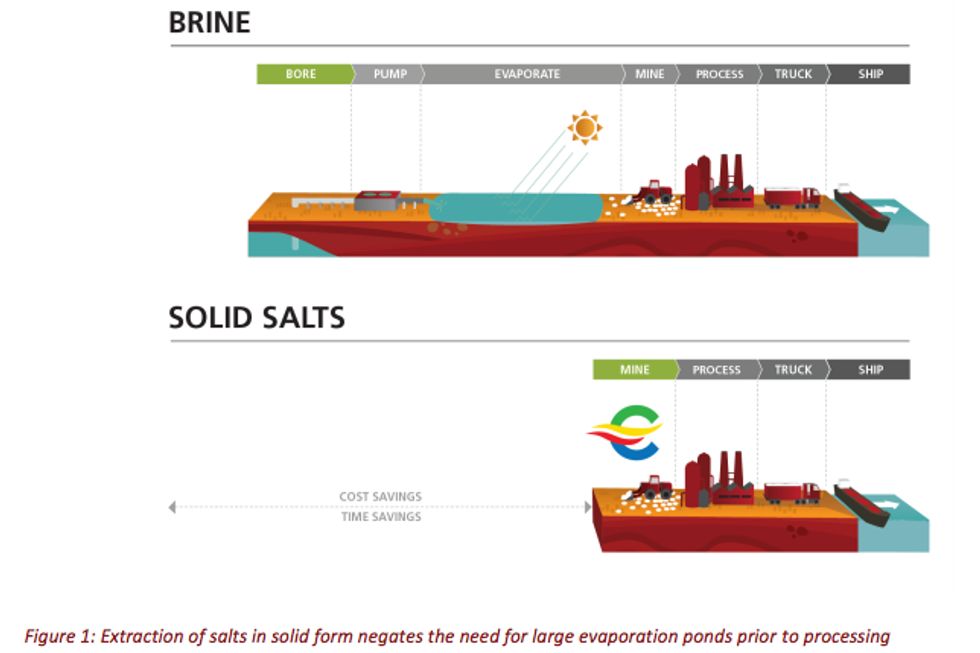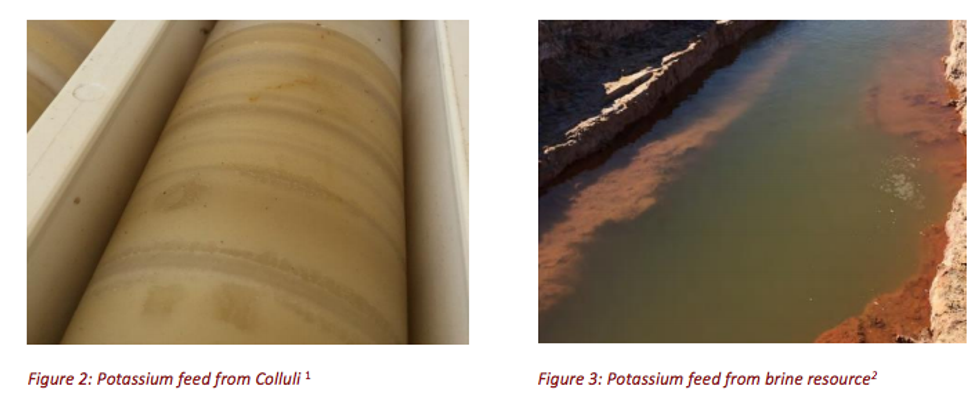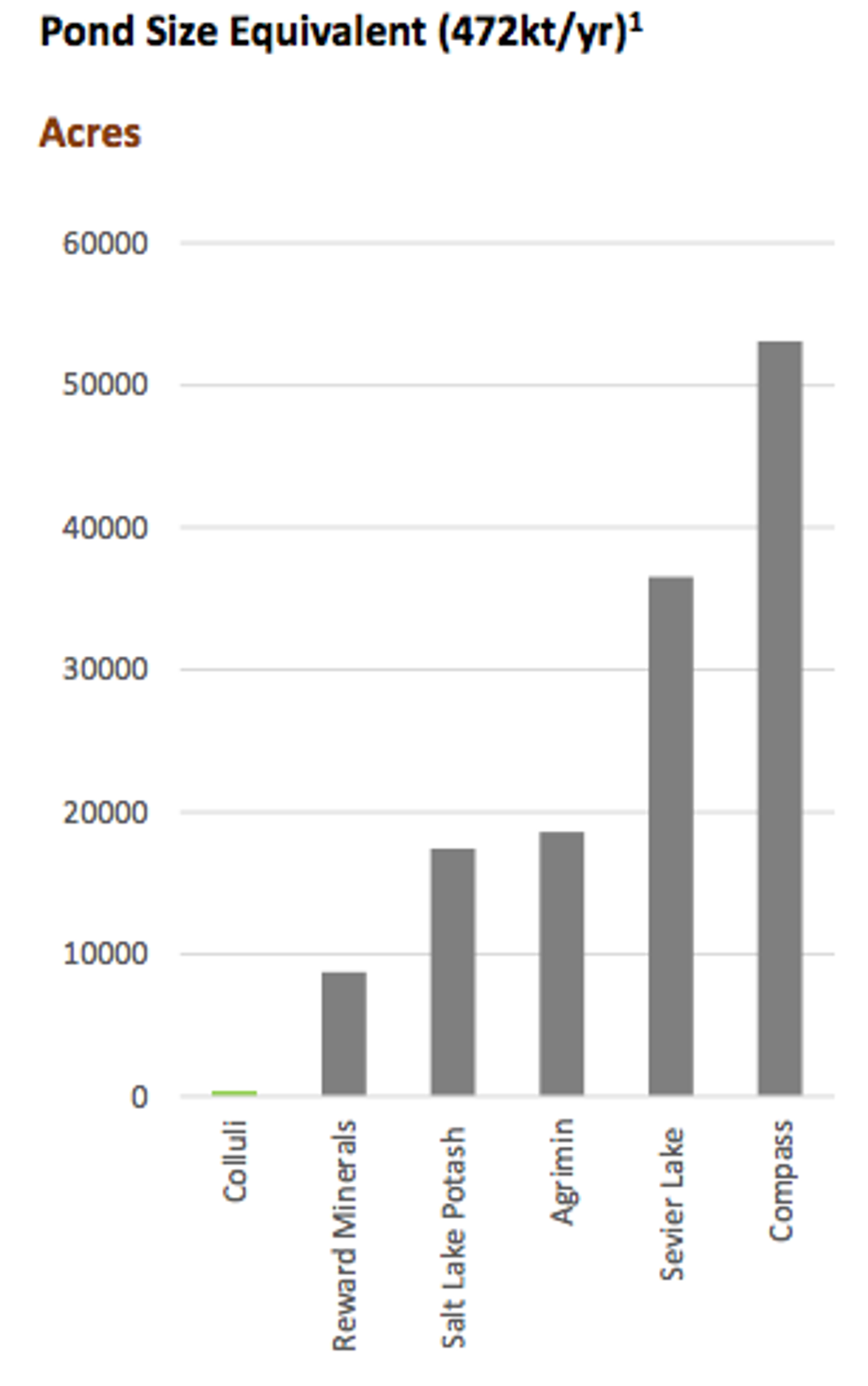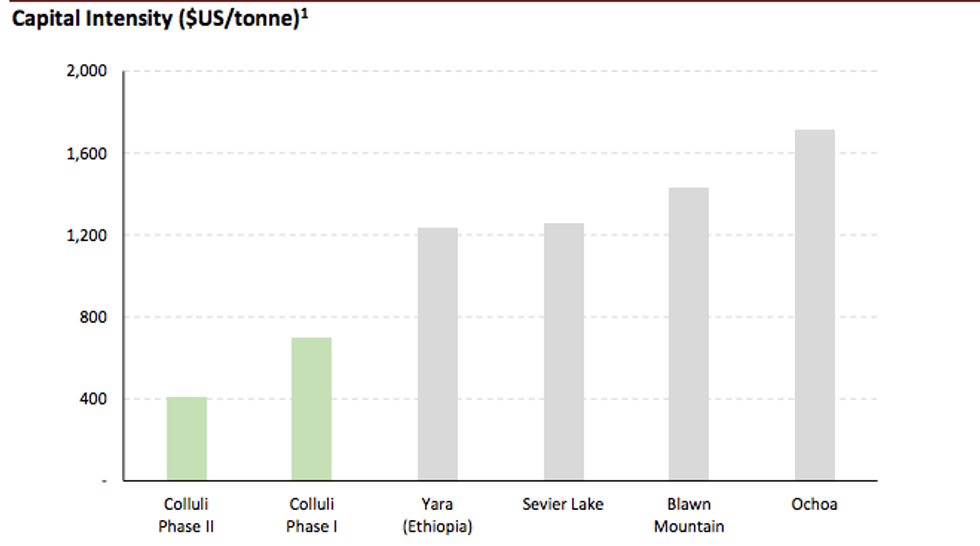
Danakali Ltd. (ASX:DNK; OTC:DNKLY) and its joint venture partner, the Eritrean National Mining Corporation (ENAMCO), are pleased to announce that following a comprehensive optimisation programme, the recovery pond area for the Colluli Potash project in Eritrea has been reduced. The recovery ponds form a key sub-set of the processing plant configuration and allow higher potassium yields …
Danakali Ltd. (ASX:DNK; OTC:DNKLY) and its joint venture partner, the Eritrean National Mining Corporation (ENAMCO), are pleased to announce that following a comprehensive optimisation programme, the recovery pond area for the Colluli Potash project in Eritrea has been reduced. The recovery ponds form a key sub-set of the processing plant configuration and allow higher potassium yields by capturing and evaporating waste brines exiting the processing plant.
Key Points
• FEED optimisation process has improved Colluli recovery pond footprint size relative to DFS
• Recovery pond area reduced by 20% relative to DFS for project start up period, despite increase in processing plant production rate
• Colluli demonstrates industry leading pond area on a per tonne of production basis
• Processing plant production rate increased from 425kt per annum to 472kt per annum following debottlenecking work completed in optimisation phase
• Cut, fill and surface preparation requirements currently under evaluation
• FEED phase well advanced with evaluation of processing plant and non-processing infrastructure bids underway
The reduction in pond area has been achieved despite an increase in the processing plant throughput relative to the definitive feasibility study (DFS) 1 , and is the result of design enhancements in the brine circuit configuration. The pond designs are also underpinned by over four years of comprehensive local weather data collection and evaporation tests.
Processing plant throughput was increased from 425kt per annum to 472kt per annum following a debottlenecking exercise that was completed in May 20172 .
Managing Director, Paul Donaldson commented “We are very pleased with the positive outcomes of the optimisation work on the recovery ponds and expect that there will be flow on benefits to the construction earthworks. The Colluli DFS demonstrated evaporation pond sizes significantly smaller than SOP brine projects as a direct consequence of the potassium salts being extracted from the resource in solid form. This benefit is unique to the Colluli resource. We are also very happy that the results from the FEED work are now flowing through, and we look forward to further results in the upcoming weeks”.
The physical state of the raw feed is a key determinant of pond size
One of the distinguishing features of the Colluli resource is that the potassium salts used for sulphate of potash (SOP) production are present in solid form, allowing immediate processing following extraction from the resource using open cut mining techniques. This eliminates the need for pre-production evaporation ponds, allowing for significant savings in cost and time.
Primary resources for SOP production are typically potassium and sulphur rich brines, the processing of which commences with the generation of a harvest salt. This harvest salt is typically generated as the product of a multi-stage evaporation and precipitation process which progressively concentrates potassium and sulphur by selectively removing calcium, sodium and magnesium salts in early stage preproduction evaporation ponds.
Primary resources for SOP production are typically potassium and sulphur rich brines, the processing of which commences with the generation of a harvest salt. This harvest salt is typically generated as the product of a multi-stage evaporation and precipitation process which progressively concentrates potassium and sulphur by selectively removing calcium, sodium and magnesium salts in early stage preproduction evaporation ponds.
The final potassium rich harvest salt generated as above is reclaimed and fed into a processing plant for conversion to SOP. Depending on the chemistry of the feed material fed into the processing plant, brines exiting the plant may be captured and directed to a set of recovery ponds to improve the overall potassium yield. These are small relative to pre-production evaporation ponds used in brine extraction.
Figure 1 shows the key differences between the process requirements for a brine and a salt in solid form
Figures 2 and 3 show the Colluli feed material which will be extracted from the resource and available for immediate conversion to SOP in the processing plant and a potassium rich brine prior to multi-stage evaporation and precipitation respectively.
Figure 4 shows pond area requirements for SOP brine projects relative to the Colluli Project.
Pond area requirements have been adjusted for an equivalent production rate of 472kt per annum. Pond sizes are influenced by form of raw material, chemistry and weather conditions.
The substantially lower surface area requirements for Colluli are a direct consequence of:
• Physical form of the potassium extracted from the resource
• Highly favourable ambient conditions
Smaller pond size for Colluli is a key contributor to industry leading capital intensity
The Colluli DFS demonstrates industry leading capital intensity as a result of both the salts presenting in solid form and the exceptionally high ore grade. Figure 5 shows capital intensity versus other advanced stage SOP projects. Low surface area recovery ponds is a key contributor to lower capital intensity.
Figure 5: DFS Capital Intensity by SOP Project1
Cut, fill and surface preparation volumes under evaluation
The cut, fill and surface preparation evaluation for the recovery ponds and overall site is currently underway. Results are expected within the next two weeks for direct comparison with the DFS.
FEED process well advanced
The front-end engineering design is well advanced. To date, 23 of 25 bids have been received and are currently under evaluation. The preferred power supplier for the project has been identified. Turner & Townsend are currently working on the EPC bidding framework and mining contract tendering will commence shortly.
For more information, please contact:
Paul Donaldson
Managing Director
+61 8 6315 1444
Click here to connect with Danakali Ltd. (ASX:DNK; OTC:DNKLY) to receive an Investor Presentation.
Source: www.danakali.com.au



